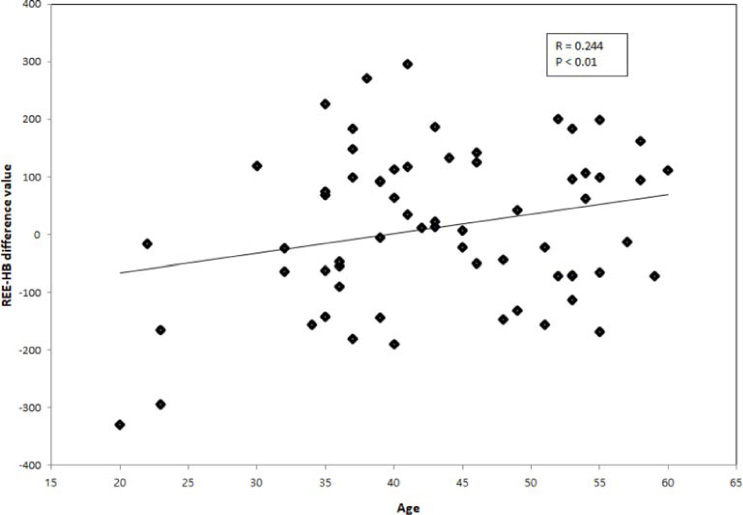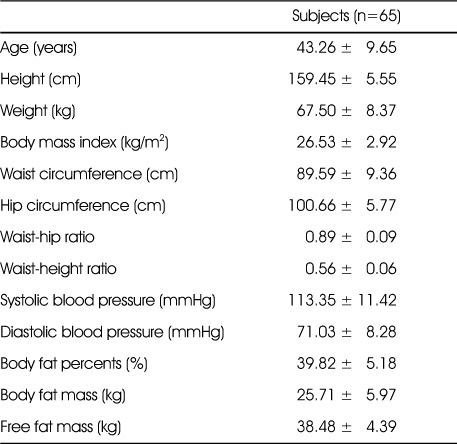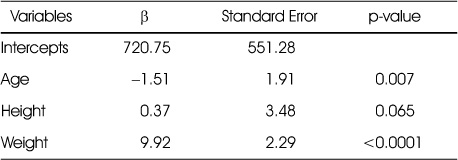Articles
- Page Path
- HOME > Korean J Community Nutr > Volume 23(5); 2018 > Article
-
Research Article
- Comparison of Predicted and Measured Resting Energy Expenditure in Overweight and Obese Korean Women
-
Ji-Sook Park, Jung-Eun Yim

-
Korean Journal of Community Nutrition 2018;23(5):424-430.
DOI: https://doi.org/10.5720/kjcn.2018.23.5.424
Published online: October 31, 2018
1Department of Food & Nutrition, Changwon National University, Changwon, Korea, Student.
2Department of Food & Nutrition, Changwon National University, Changwon, Korea, Professor.
- Corresponding author: Jung-Eun Yim, Ph.D. Department of Food and Nutrition, Changwon National University, Changwon 51140, Korea. Tel: (055) 213-3517, Fax: (055) 281-7480, jeyim@changwon.ac.kr
Copyright © 2018 The Korean Society of Community Nutrition
This is an Open-Access article distributed under the terms of the Creative Commons Attribution Non-Commercial License (http://creativecommons.org/licenses/by-nc/3.0/) which permits unrestricted non-commercial use, distribution, and reproduction in any medium, provided the original work is properly cited.
- 1,245 Views
- 3 Download
- 1 Crossref
Figure & Data
REFERENCES
Citations

- Resting energy expenditure in Korean type 2 diabetes patients: comparison between measured and predicted values
Ji-Sook Park, Sung-Rae Cho, Jung-Eun Yim
Nutrition Research and Practice.2023; 17(3): 464. CrossRef

Fig. 1
The Anthropometric variables in overweight Korean women subjects
Resting Energy Expenditure in overweight Korean women subjects
Values are Mean ± SD
Abbreviation: WH, Weight Height
1) Resting energy expenditure
2) [(predicted RMR − measured RMR) / measured RMR] × 100
3) Percentage of subjects predicted by formula within 90% to 110% of measured REE
4) Percentage of subjects predicted by formula < 90% of measured REE
5) Percentage of subjects predicted by formula > 110% of measured REE
6) Koreans Dietary Reference Intakes
Correlation coefficient between Resting Energy Expenditure and Anthropometric measurements
Values are Mean ± SD Abbreviation: WH, Weight Height 1) Resting energy expenditure 2) [(predicted RMR − measured RMR) / measured RMR] × 100 3) Percentage of subjects predicted by formula within 90% to 110% of measured REE 4) Percentage of subjects predicted by formula < 90% of measured REE 5) Percentage of subjects predicted by formula > 110% of measured REE 6) Koreans Dietary Reference Intakes

 KSCN
KSCN




 Cite
Cite


